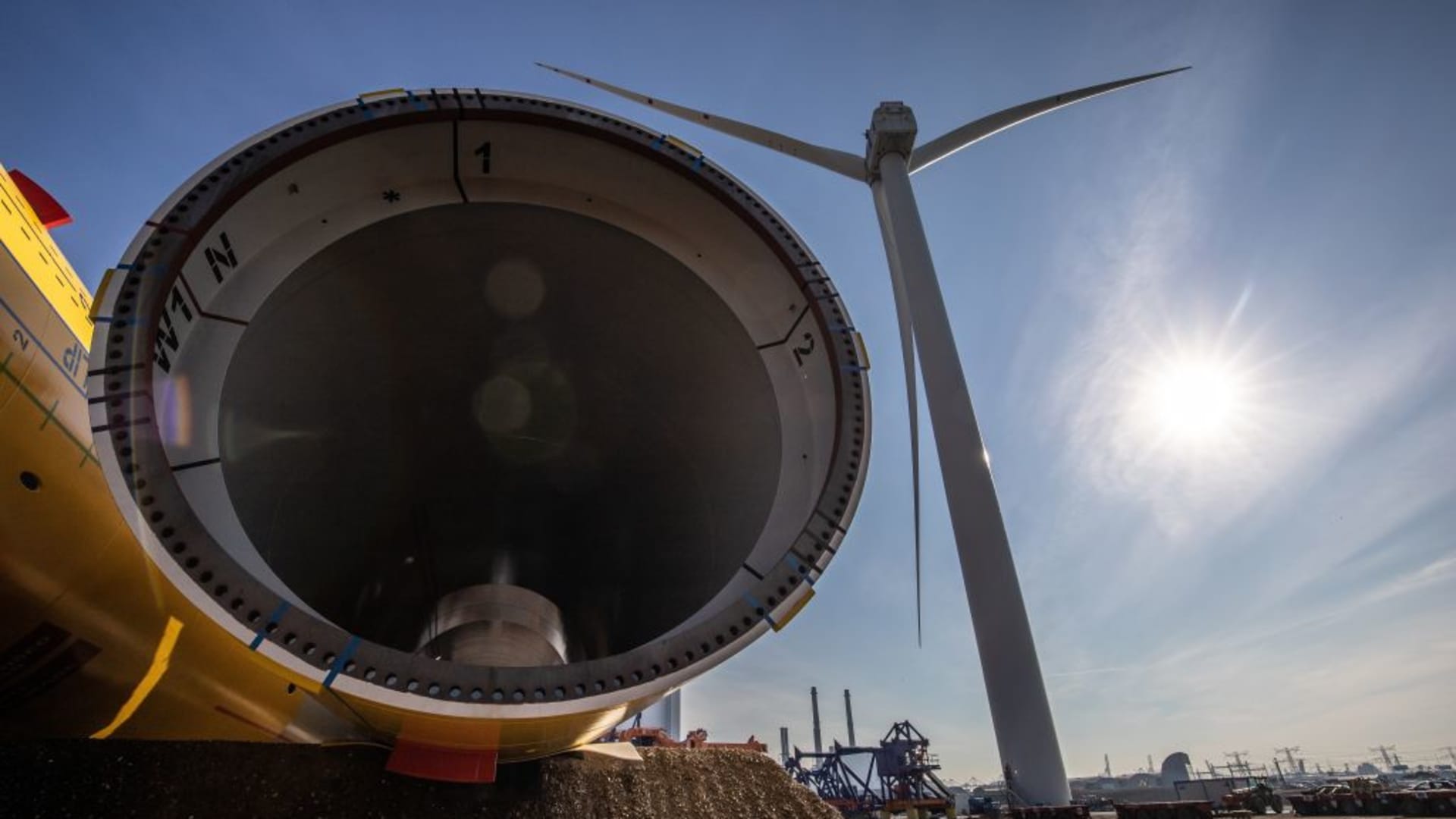GE hoping to 3D print concrete components for wind turbines so it can save on transportation costs

A new research facility which hopes to 3D print the concrete bases of giant wind turbine towers has been launched, with those involved in the project hoping it will help to lower costs for the industry as turbines grow in size.
In an announcement last week, GE Renewable Energy said the research would “enable GE to 3D print the bottom portion of the wind turbine towers on-site at wind farms.” This would also, it said, reduce transportation costs.
Danielle Merfeld, who is chief technology officer at GE Renewable Energy, said in a statement that it was “particularly important to continuously improve the ways we design, manufacture, transport, and construct the large components of modern wind farms.”
The facility in Bergen, New York, is described as being “at the heart” of a collaboration with cement giant Holcim and Cobod, a firm which specializes in 3D printing. The multi-year partnership was announced back in 2020.
According to GE, the printer in Bergen is “the size of a three story building” and able to print tower sections as tall as 20 meters. Henrik Lund-Nielsen, the founder and general manager of Cobod, said the printer was “the largest of its kind in the world” and could “print in excess of 10 tons of real concrete per hour.”
A grant from the U.S. Department of Energy has helped support research at the site, where a 20-strong team is pushing ahead with optimizing the technology. It’s expected that “first applications in the field” will take place at some point in the next five years, GE says.
The work being done in New York state represents just one example of how companies involved in the wind energy sector are looking to find new ways of developing turbines.
Firms such as Sweden-based Modvion, for instance, are focused on developing wind turbine towers using laminated wood. In April 2020, the business said it had installed a 30-meter tower on an island near Gothenburg.
Back in the U.S., the significant dimensions of the printer at Bergen also reflects a growing interest — and need — for technology that will enable companies to develop huge wind turbines.
The last few years have seen a number of major players in the sector announce details for large turbines.
GE Renewable Energy’s Haliade-X turbine, for instance, will have a height of up to 260 meters (853 feet), a rotor diameter of 220 meters and 107-meter blades. In China, Aug. 2021 saw MingYang Smart Energy release details of a 264-meter tall design that will use 118-meter blades.
Elsewhere, Danish firm Vestas is working on a 15-megawatt turbine that will have a rotor diameter of 236 meters and 115.5-meter blades while Siemens Gamesa Renewable Energy is developing a turbine that incorporates 108-meter blades and a rotor diameter of 222 meters.




